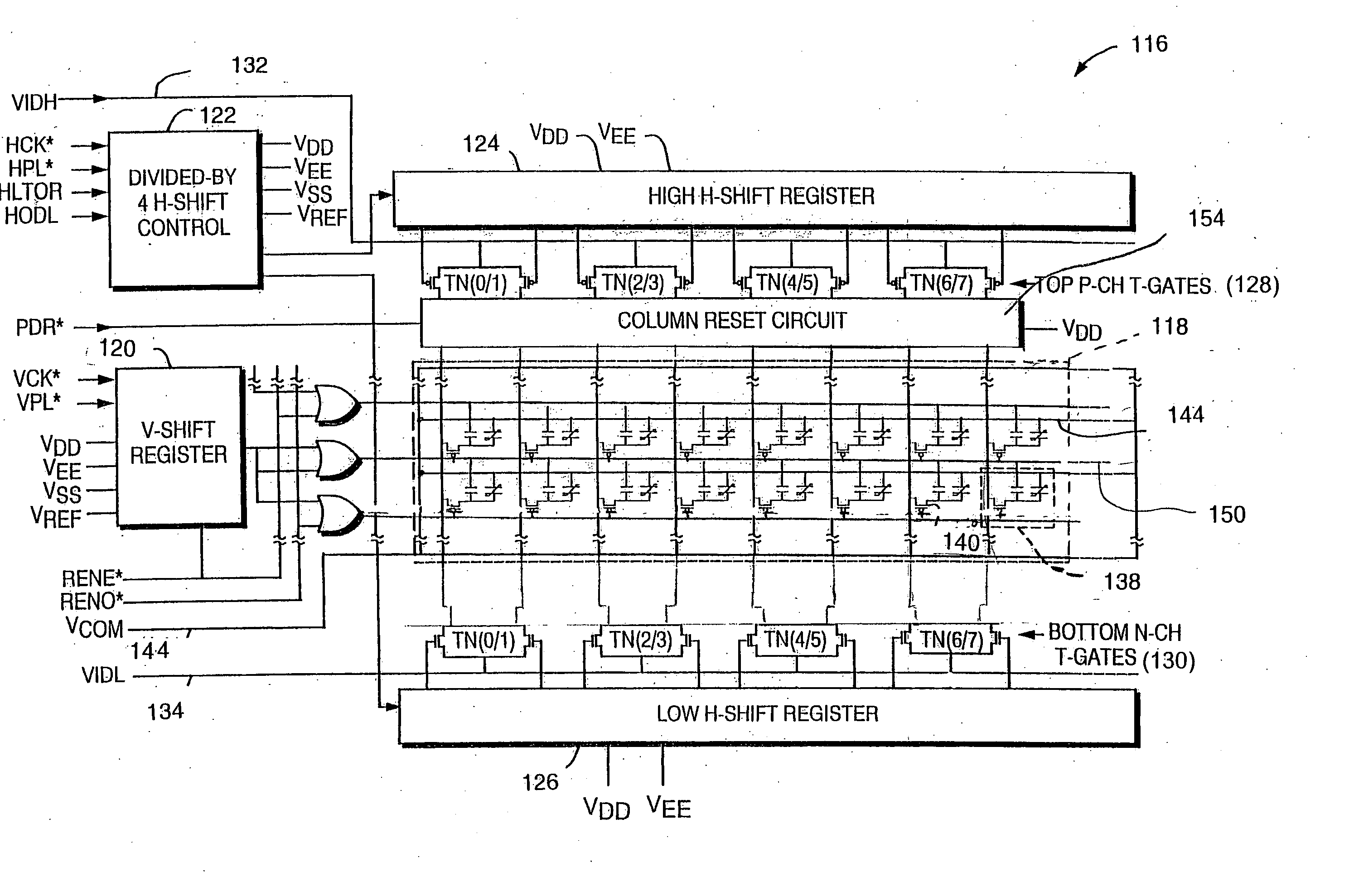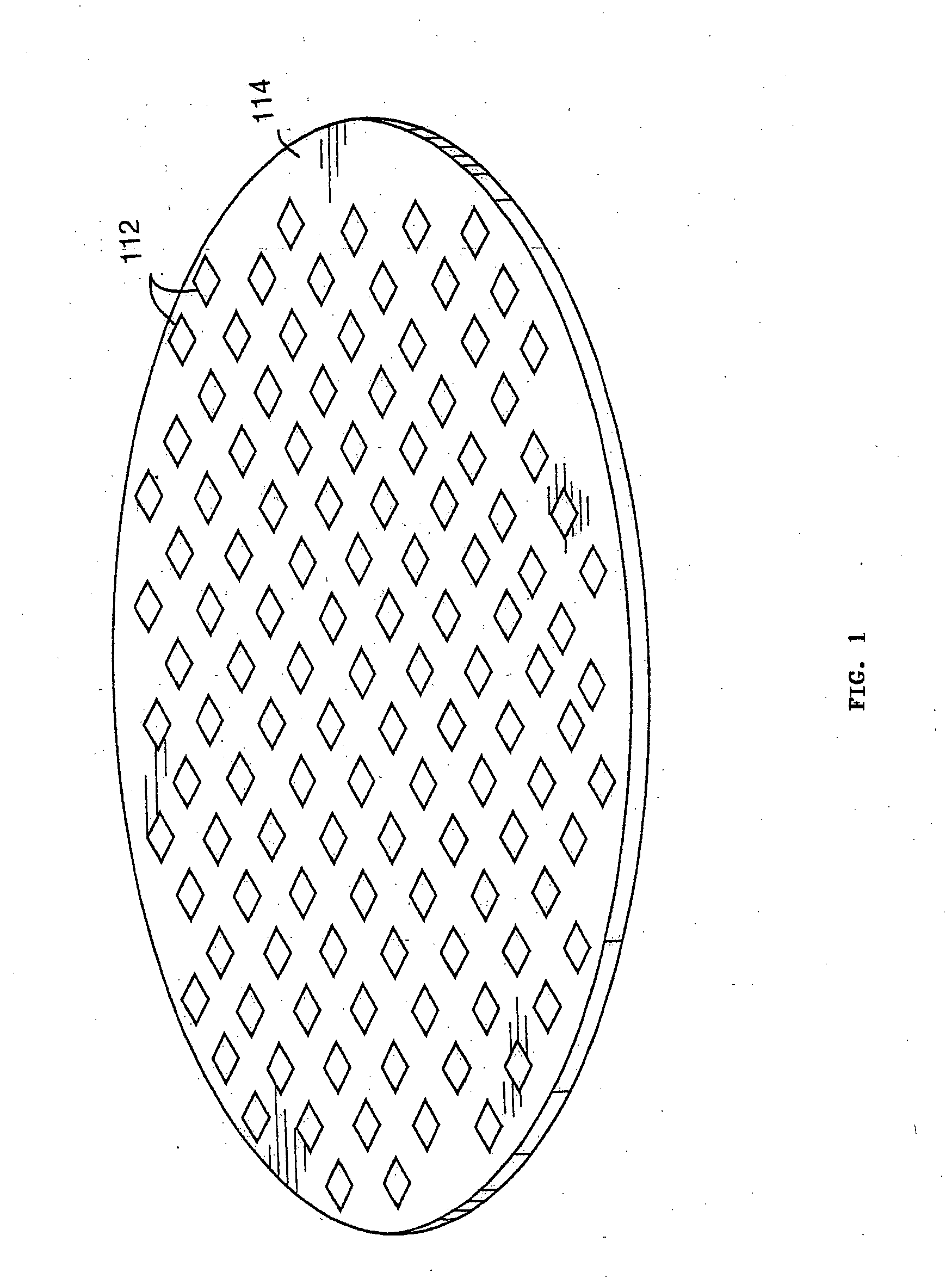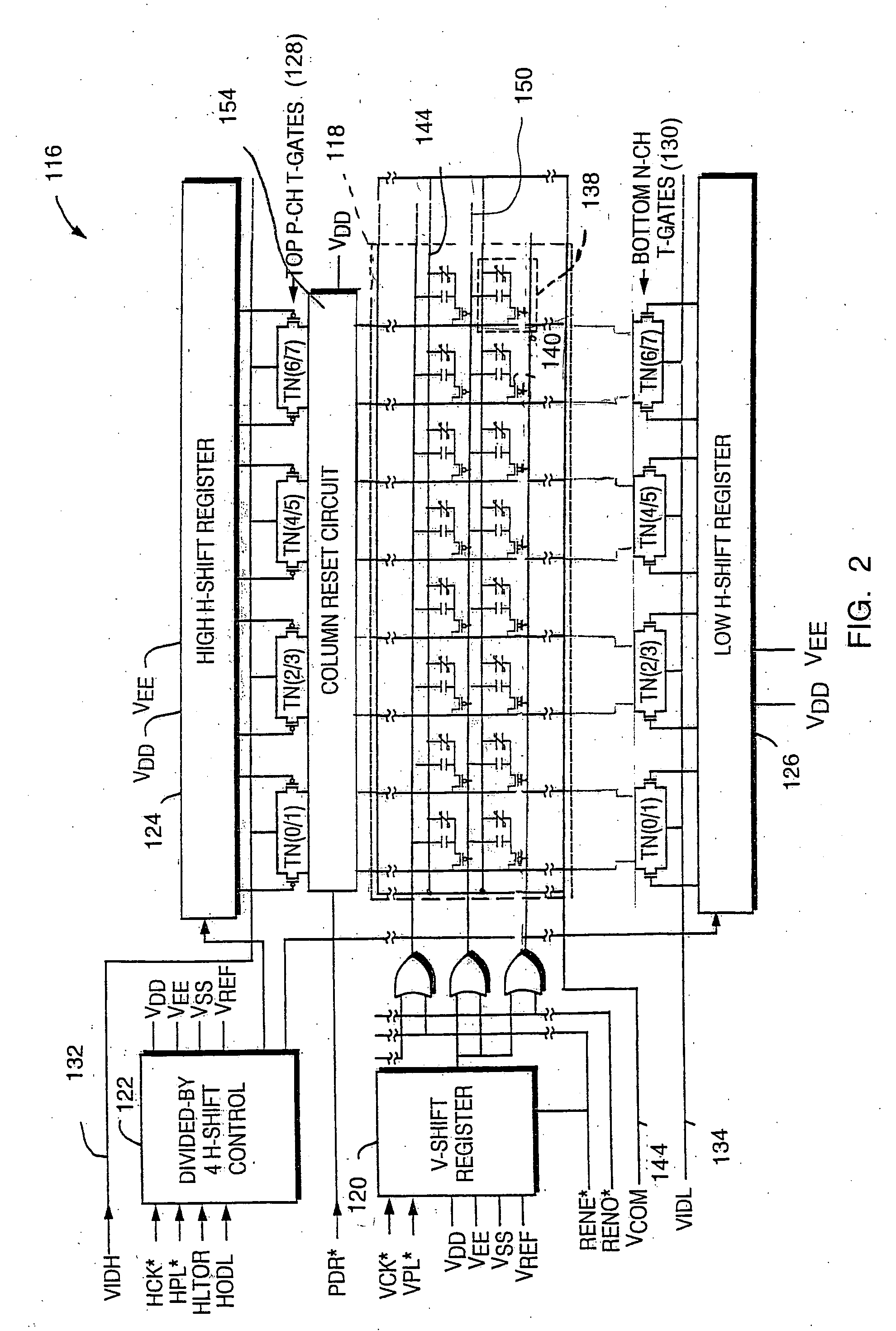Portable microdisplay system
a micro-display and display technology, applied in the field of portable micro-display systems, can solve the problems of limiting the processing of further circuits to low temperatures, increasing the complexity of integrated circuits for displays, and limiting the material selection
- Summary
- Abstract
- Description
- Claims
- Application Information
AI Technical Summary
Benefits of technology
Problems solved by technology
Method used
Image
Examples
Embodiment Construction
[0114] Referring to the drawings, where like numerals indicate like elements, there is illustrated a display in accordance with the present invention, generally referred to as 110 in FIG. 9, for example.
[0115] A preferred embodiment of the invention utilizes a process of making a plurality of flat panel displays 110 in which a large number of active matrix arrays 112 are fabricated on a single wafer 114 as illustrated in connection with FIG. 1.
[0116] The number of displays fabricated on a single wafer depends upon the size of the wafer and the size of each display. In a preferred embodiment, the wafer has a five inch diameter or larger. The size of each display depends on the resolution and pixel electrode size. In a display having a resolution of approximately 76,800 pixels (e.g. a 320×240 array), commonly referred to as QVGA, with a 0.24 inch diagonal display and the pixel electrodes having a width of 15 microns, the active display area is 4.8 mm×3.6 mm. The display die has dime...
PUM
 Login to View More
Login to View More Abstract
Description
Claims
Application Information
 Login to View More
Login to View More - R&D
- Intellectual Property
- Life Sciences
- Materials
- Tech Scout
- Unparalleled Data Quality
- Higher Quality Content
- 60% Fewer Hallucinations
Browse by: Latest US Patents, China's latest patents, Technical Efficacy Thesaurus, Application Domain, Technology Topic, Popular Technical Reports.
© 2025 PatSnap. All rights reserved.Legal|Privacy policy|Modern Slavery Act Transparency Statement|Sitemap|About US| Contact US: help@patsnap.com



